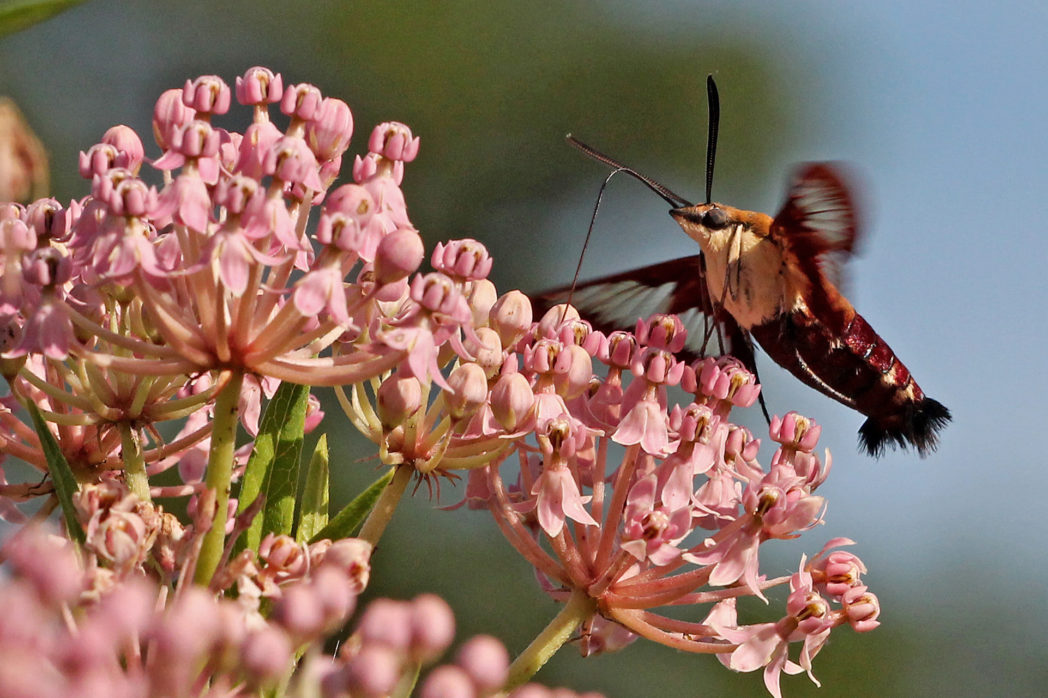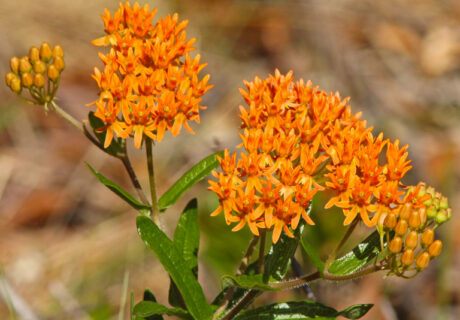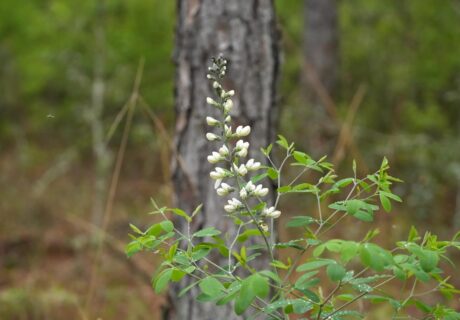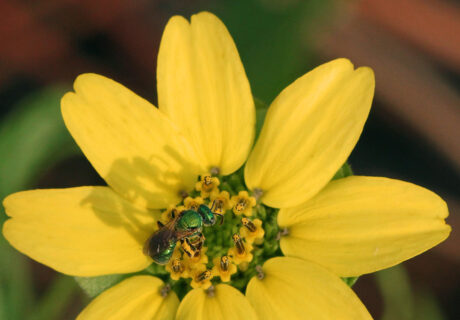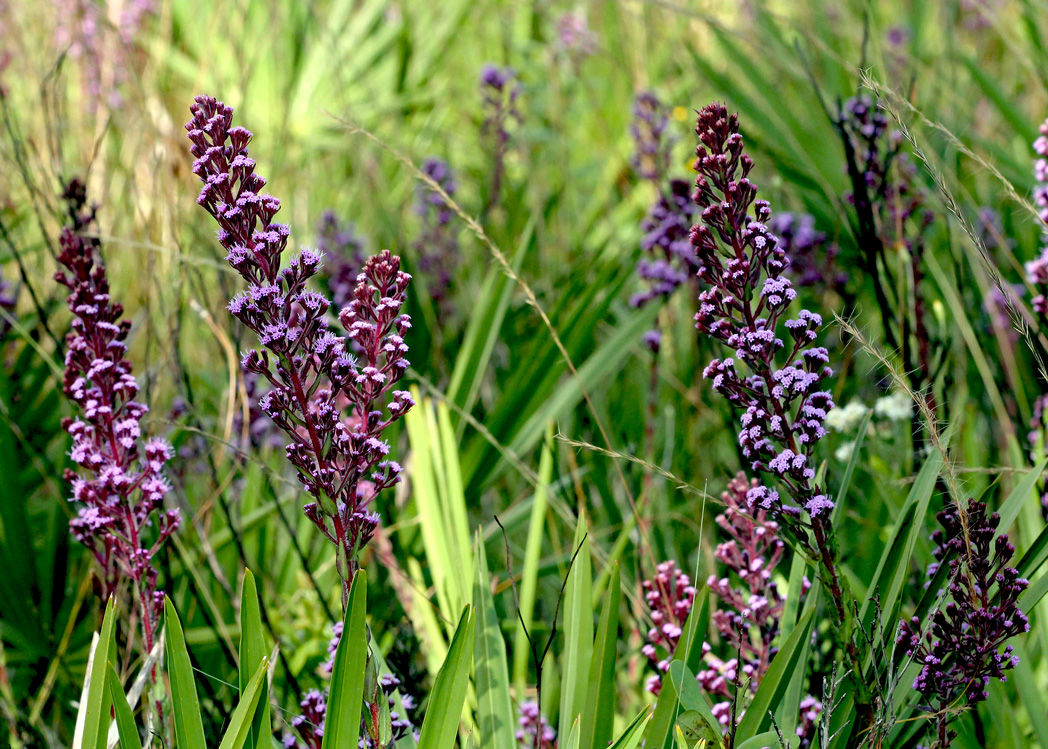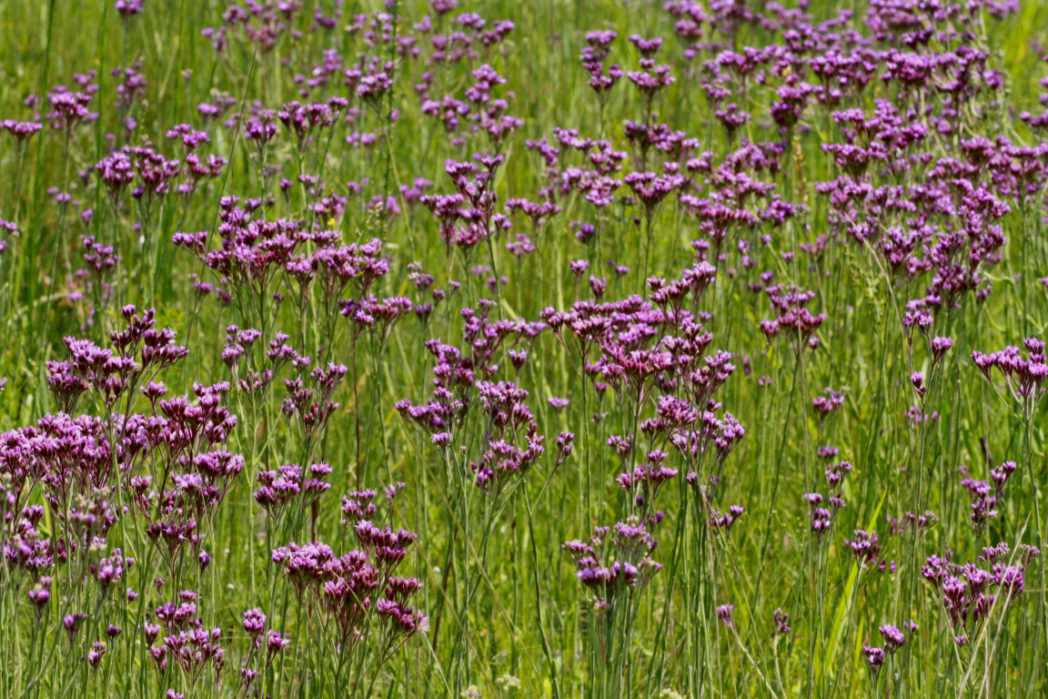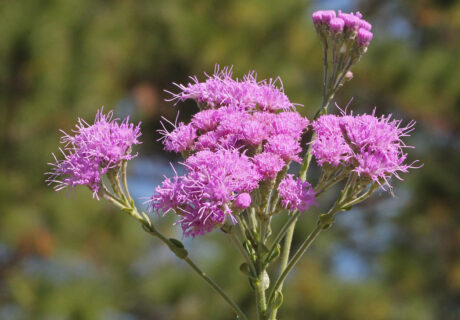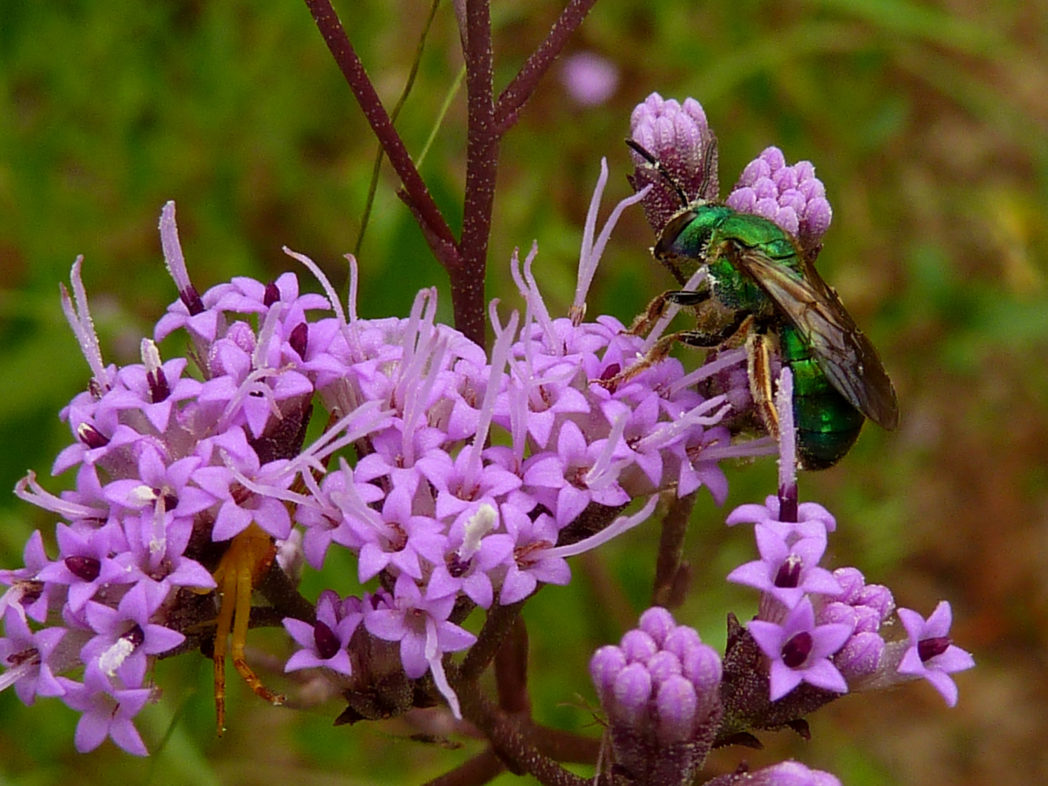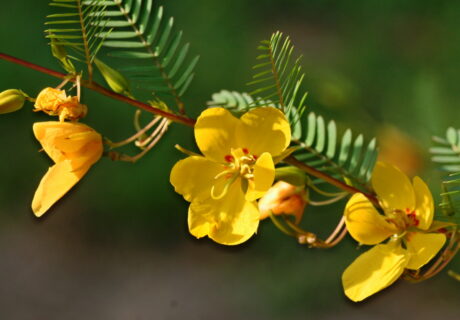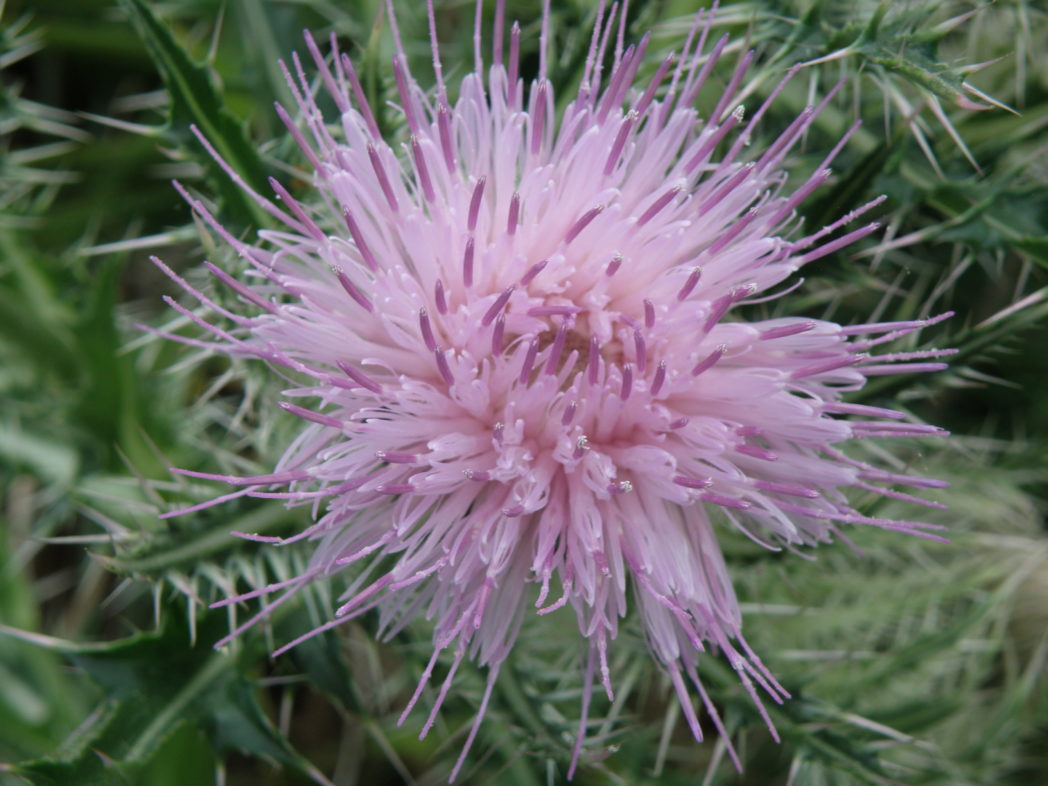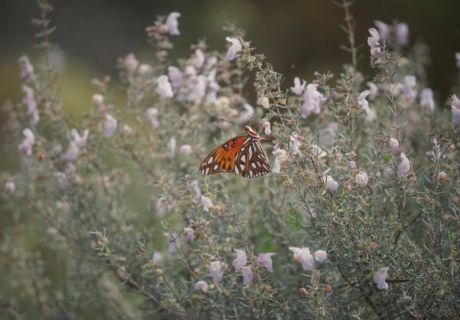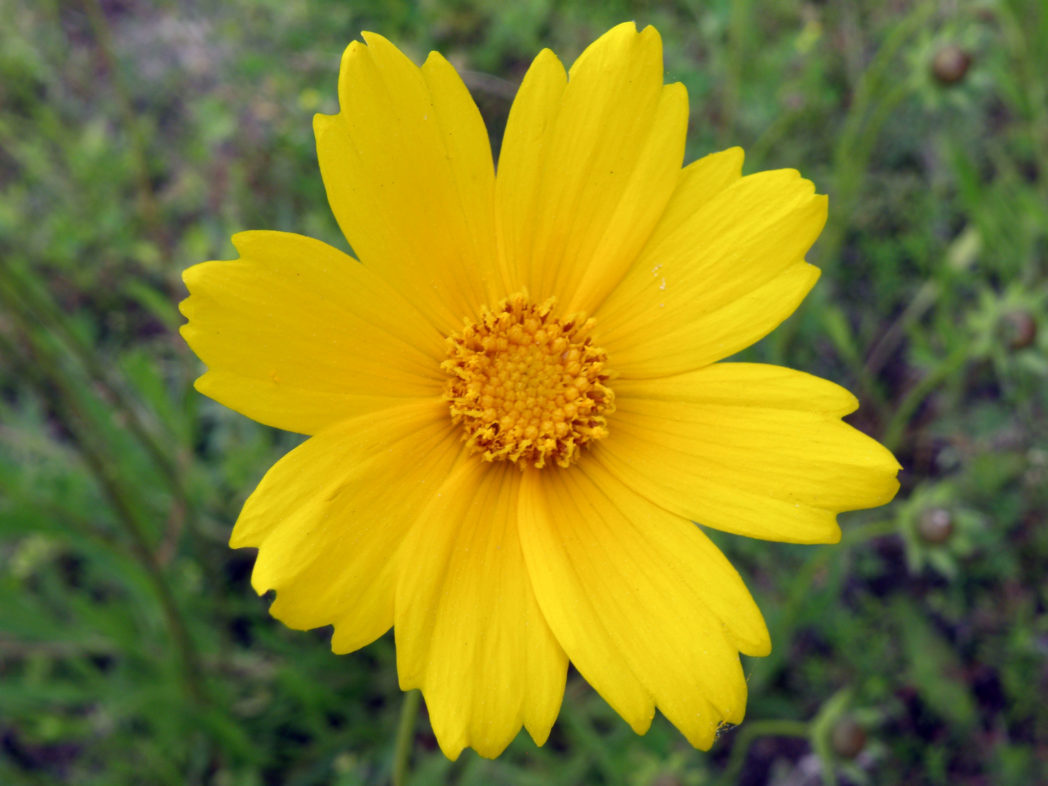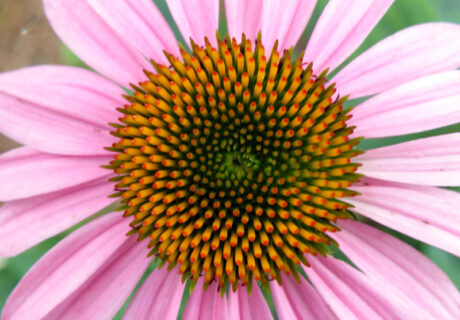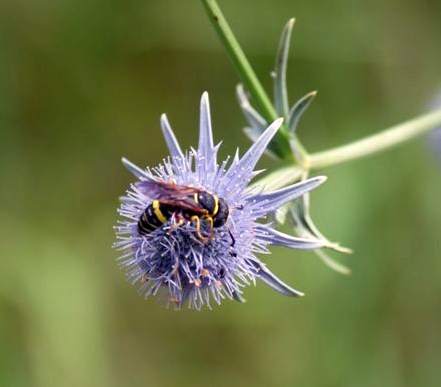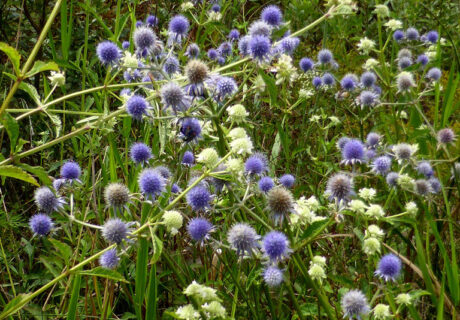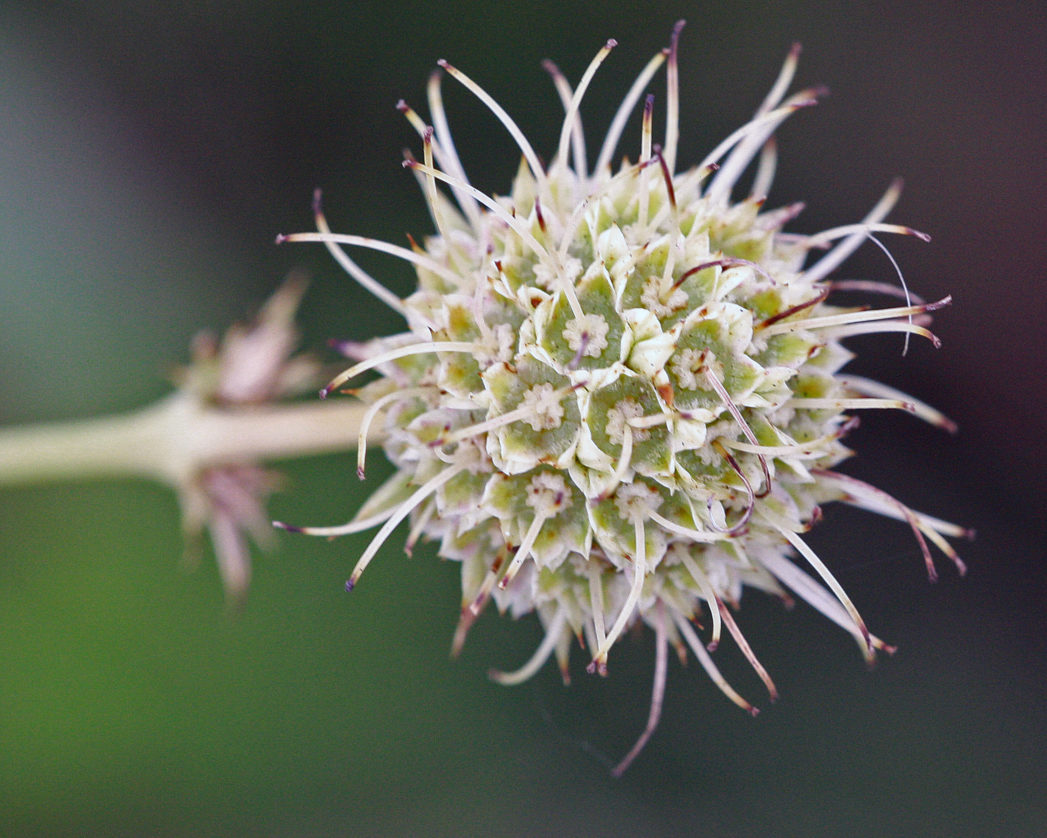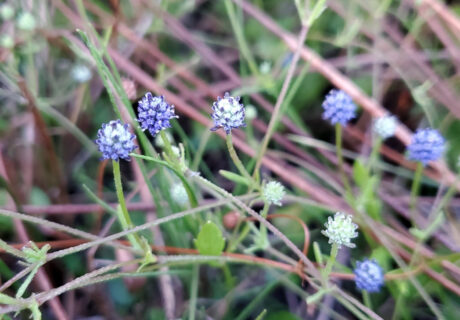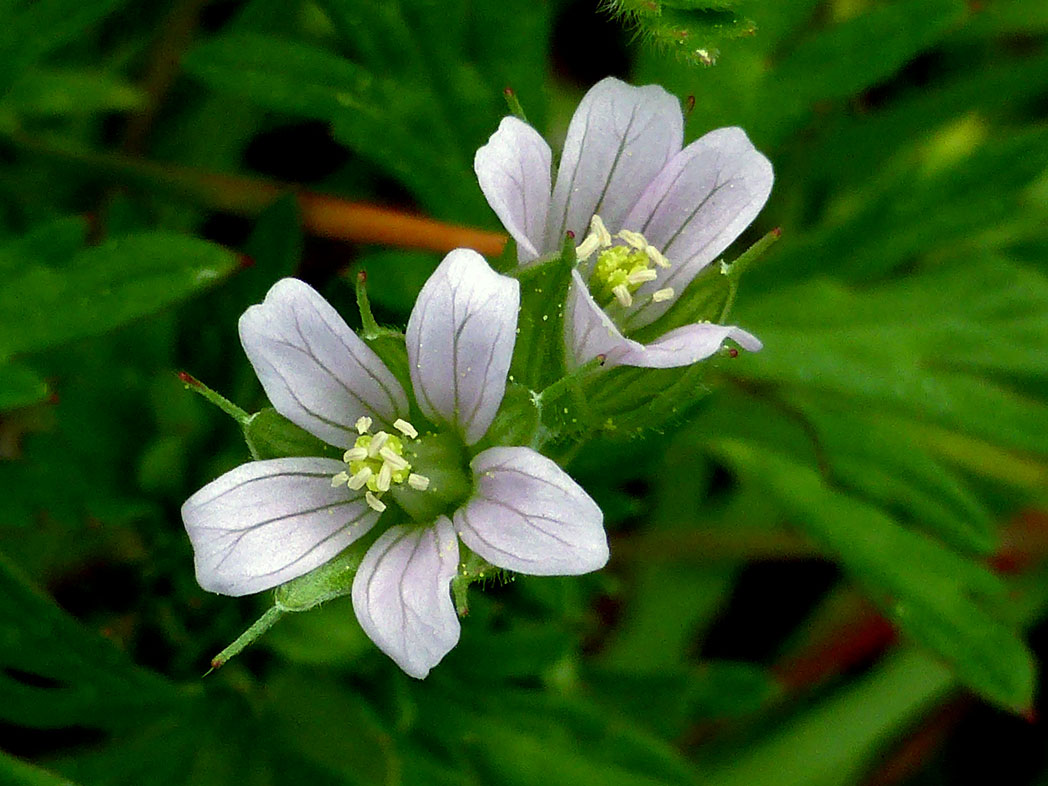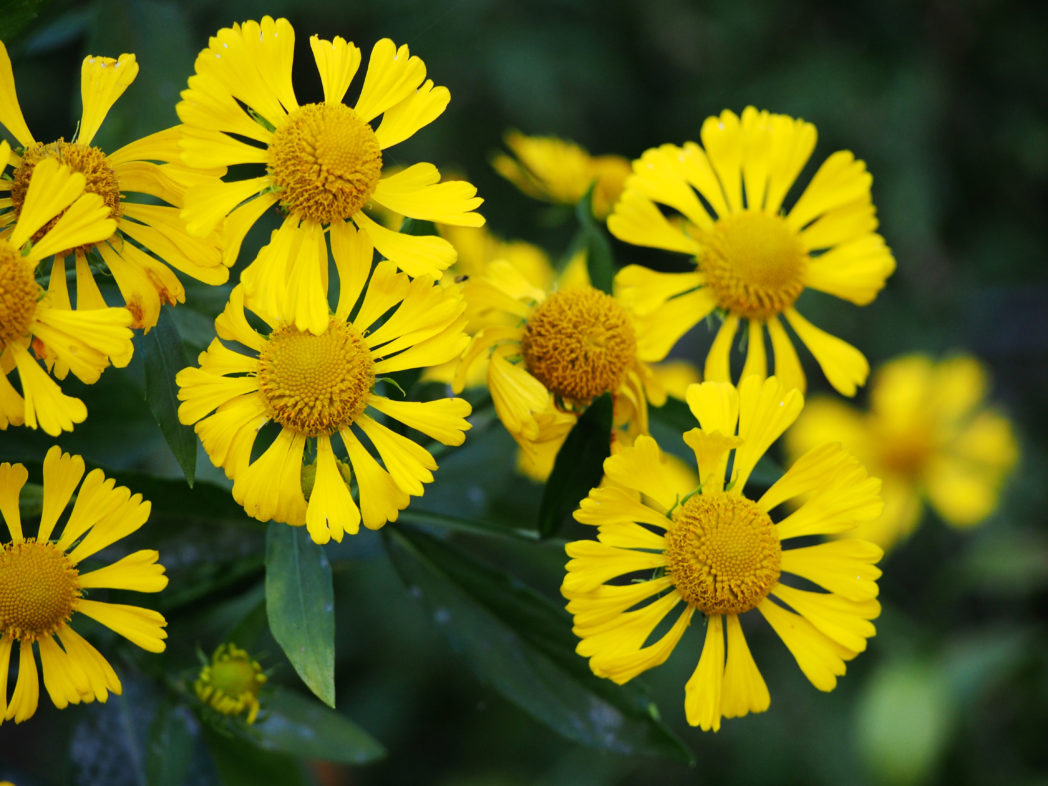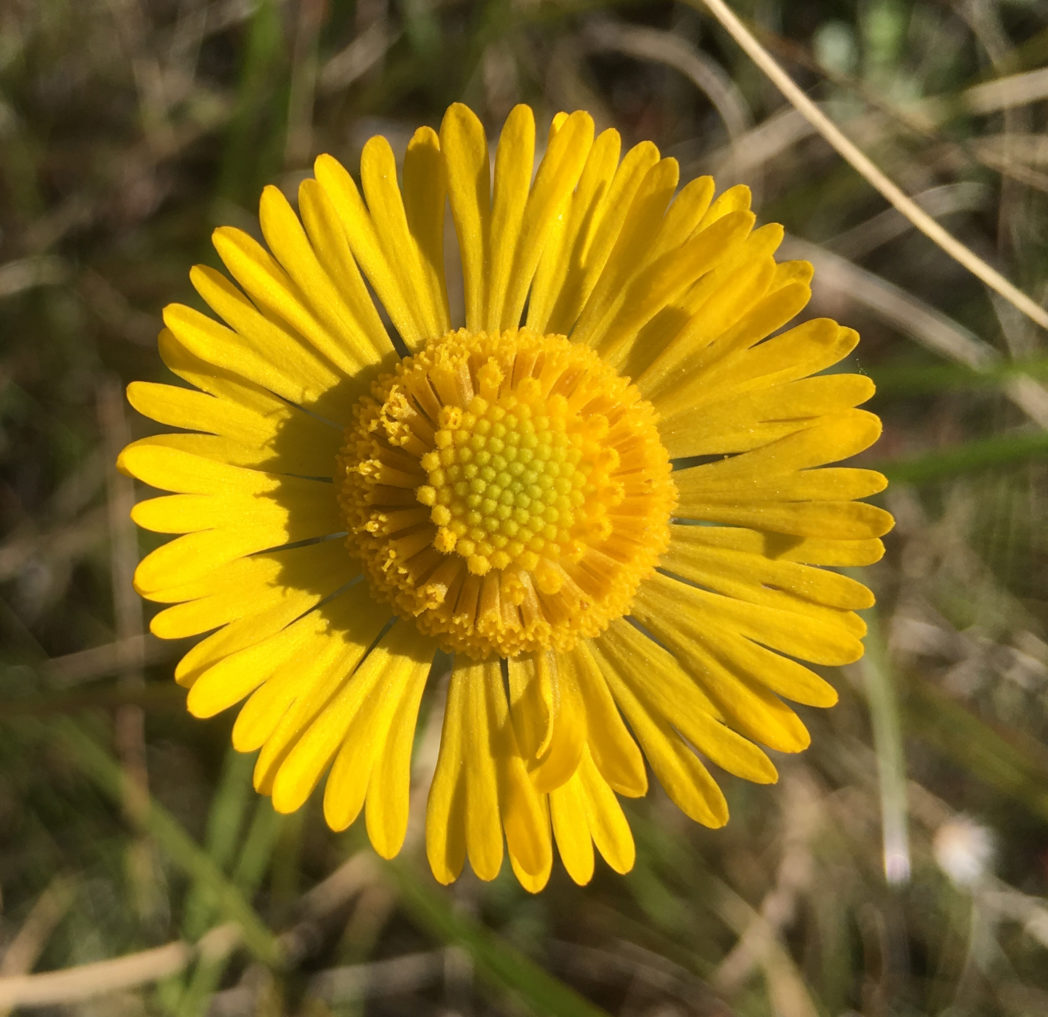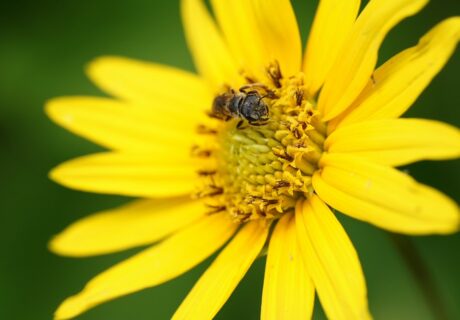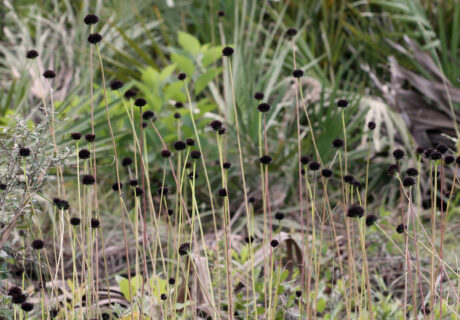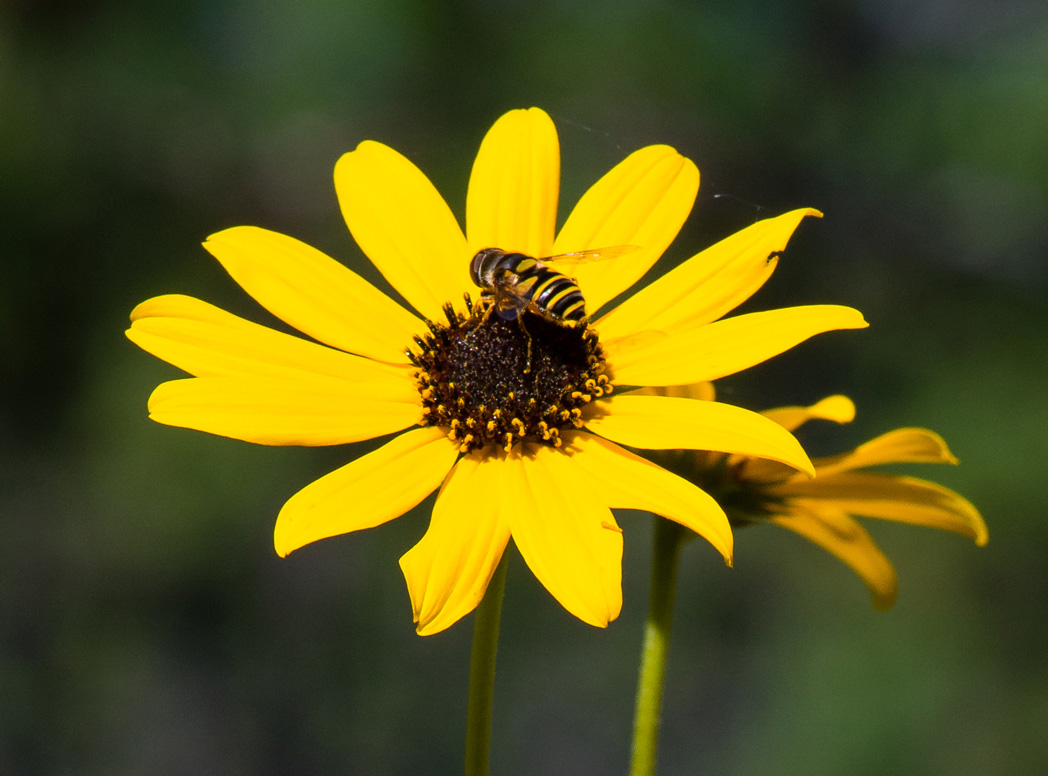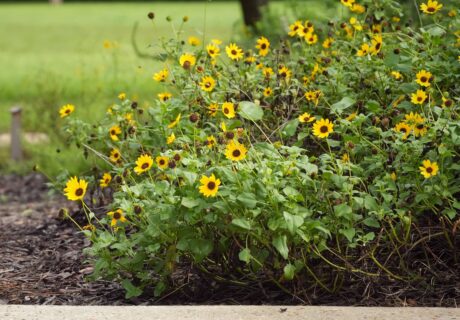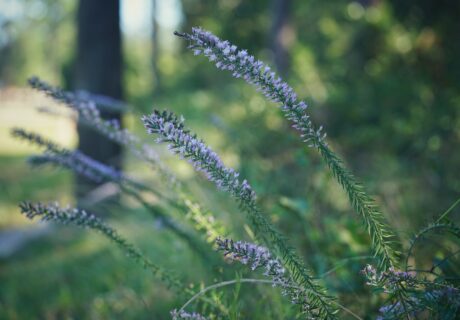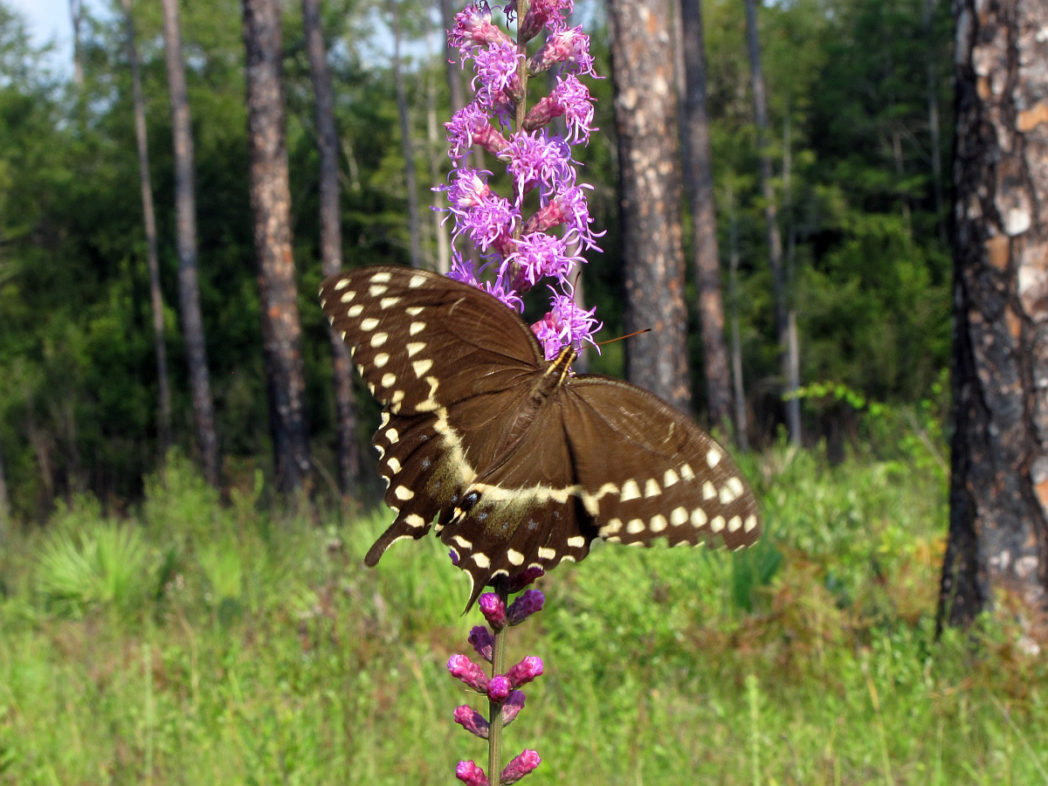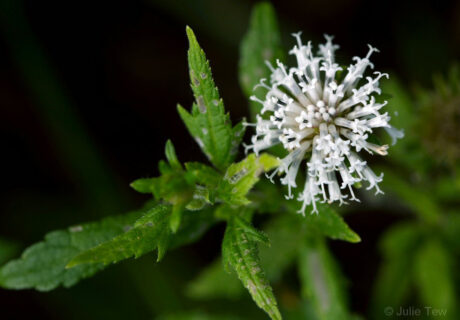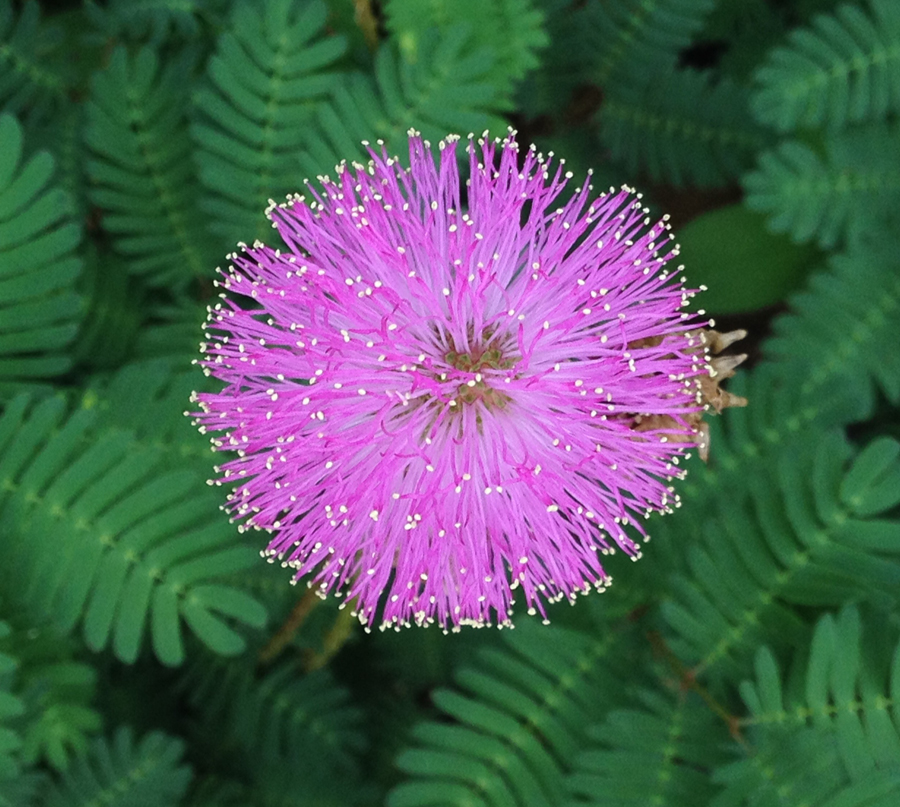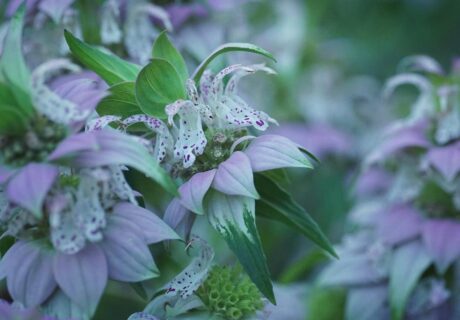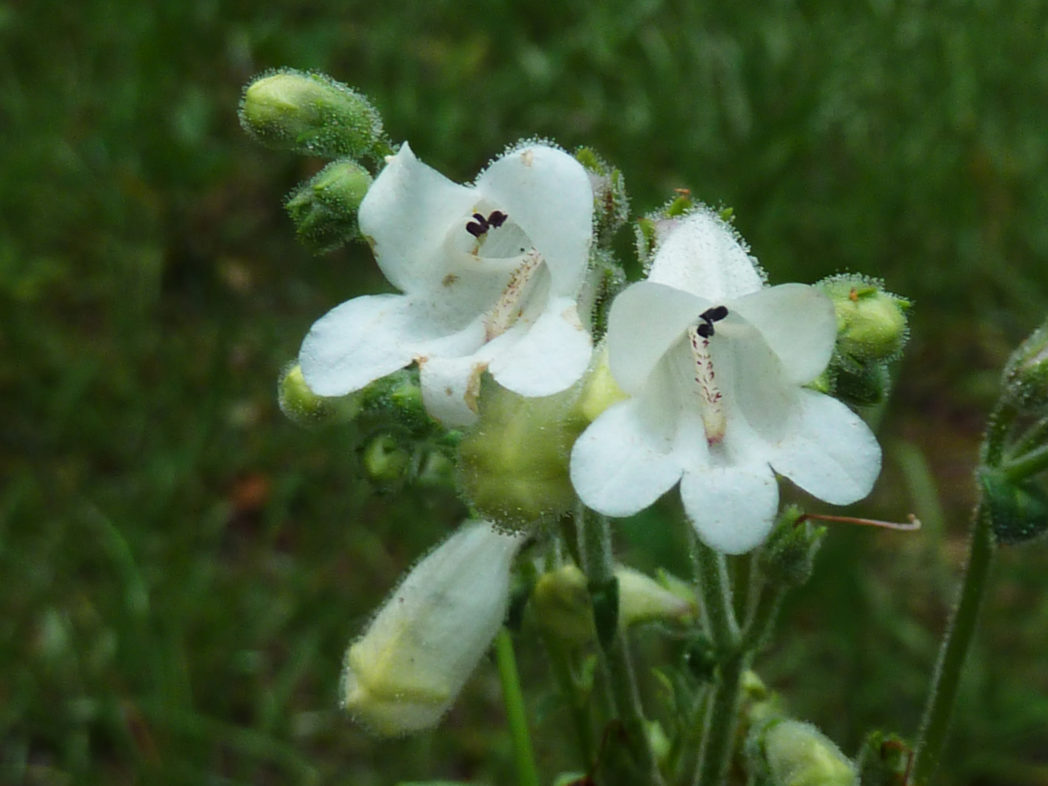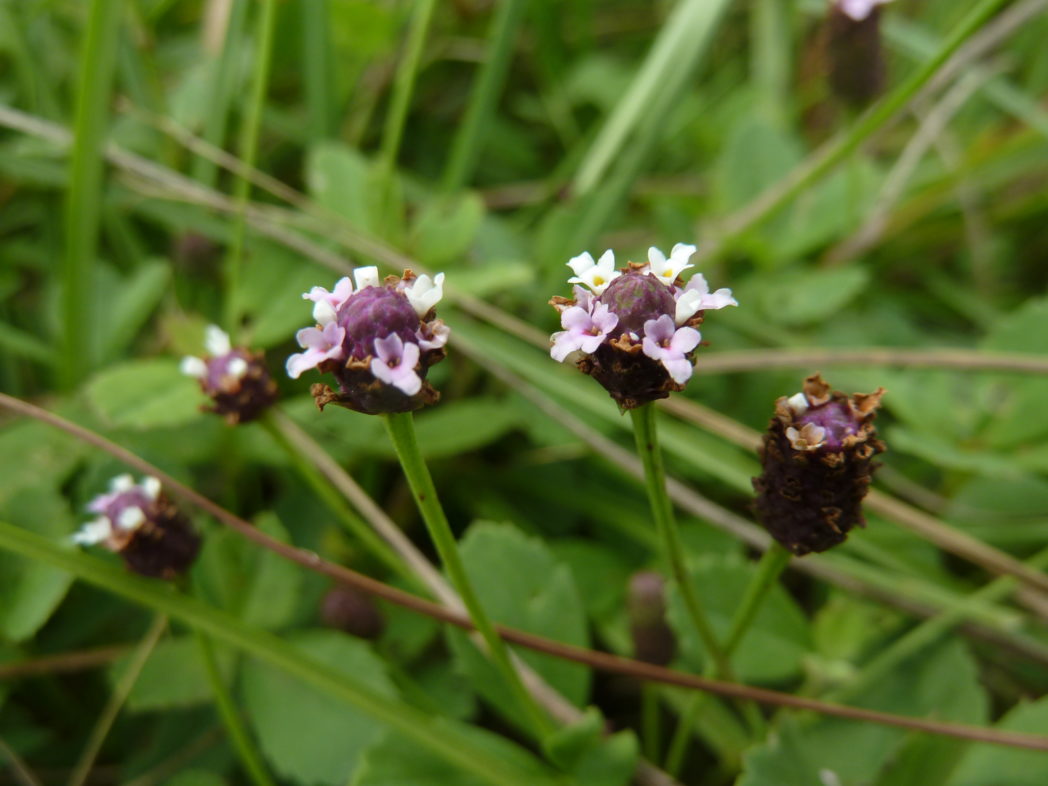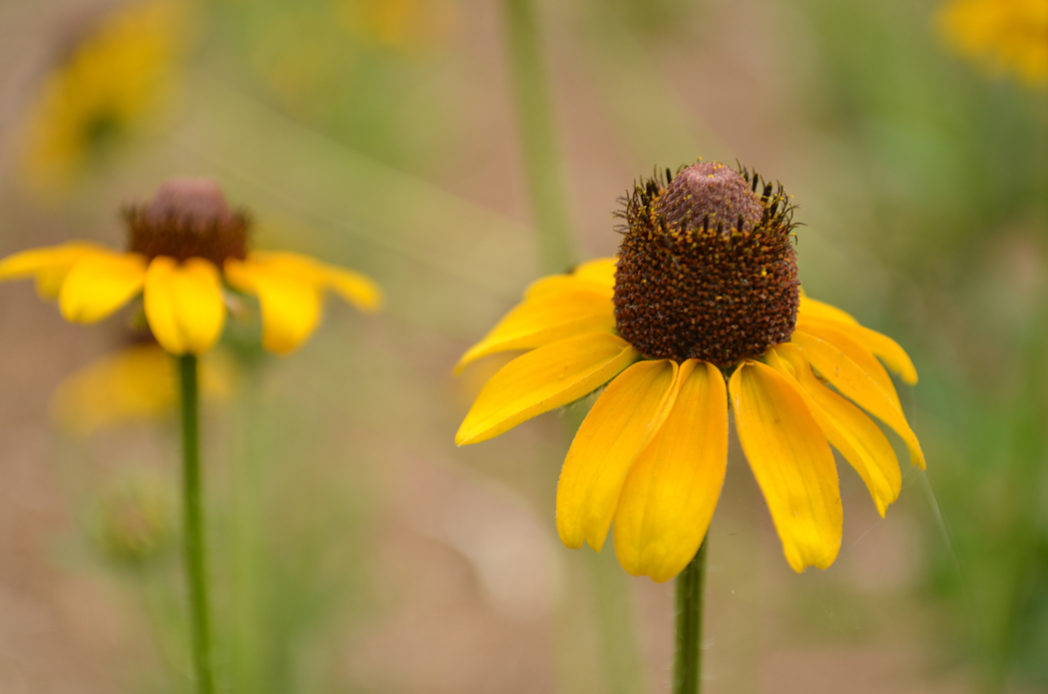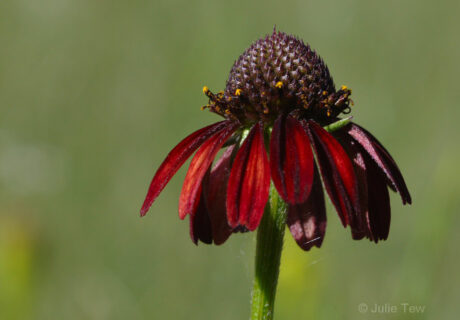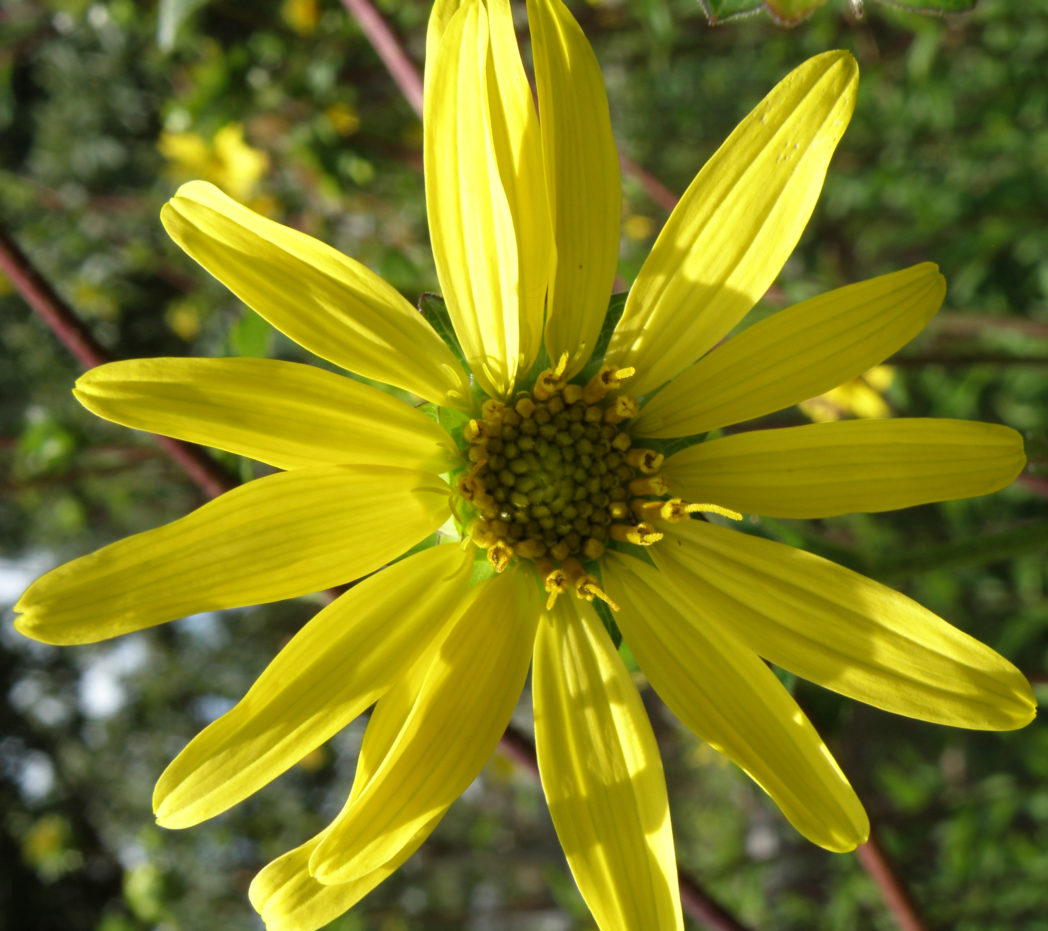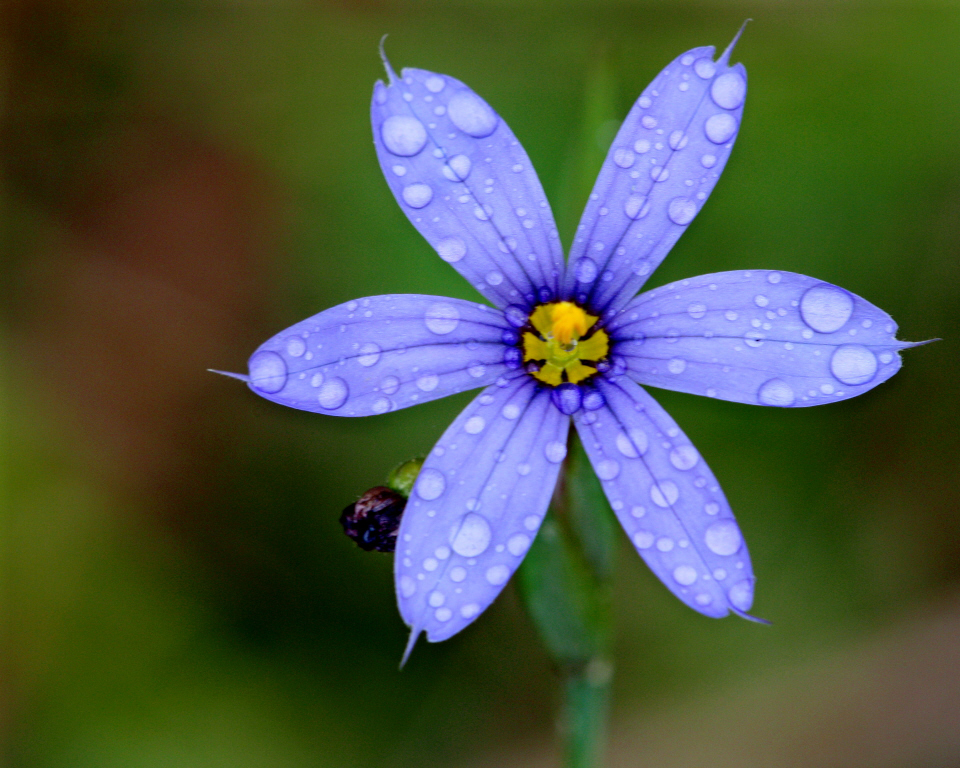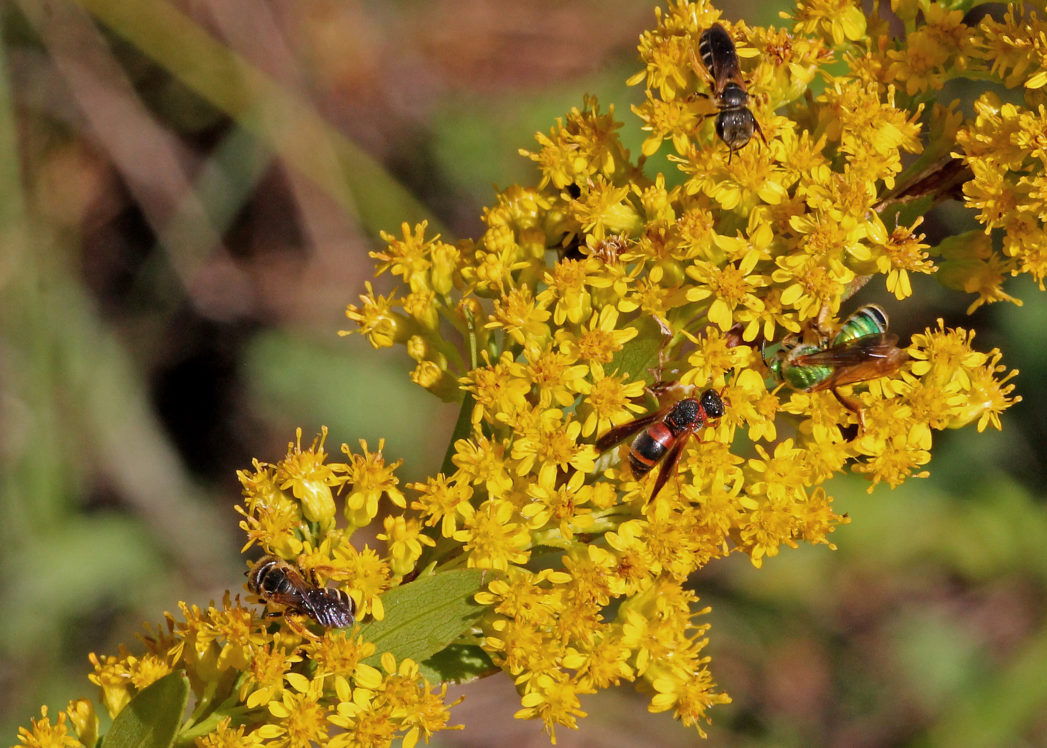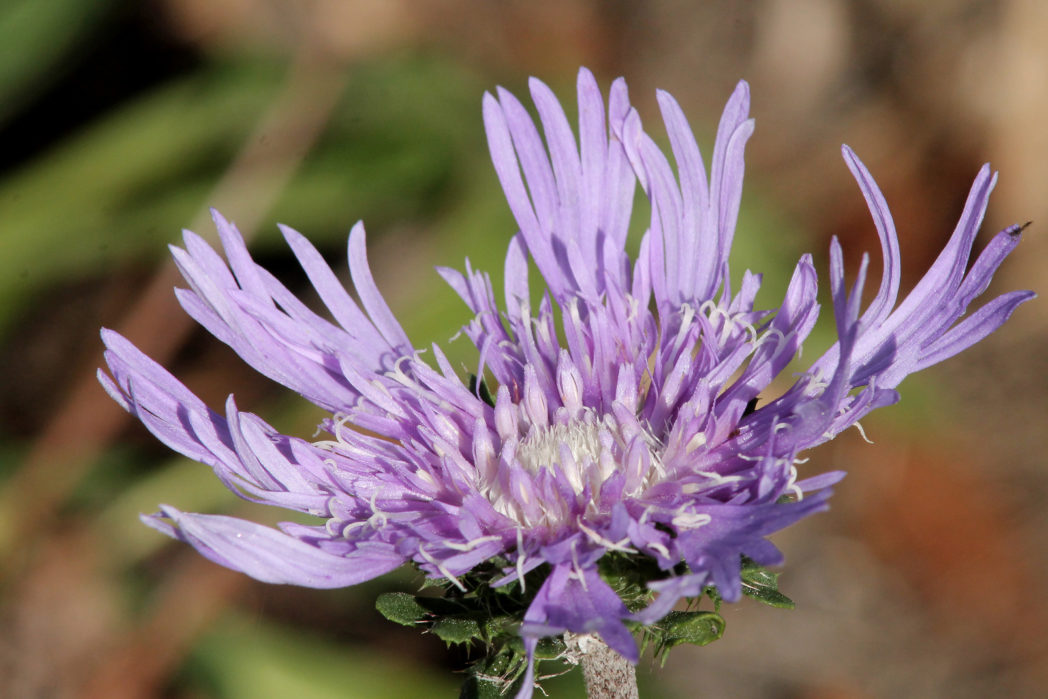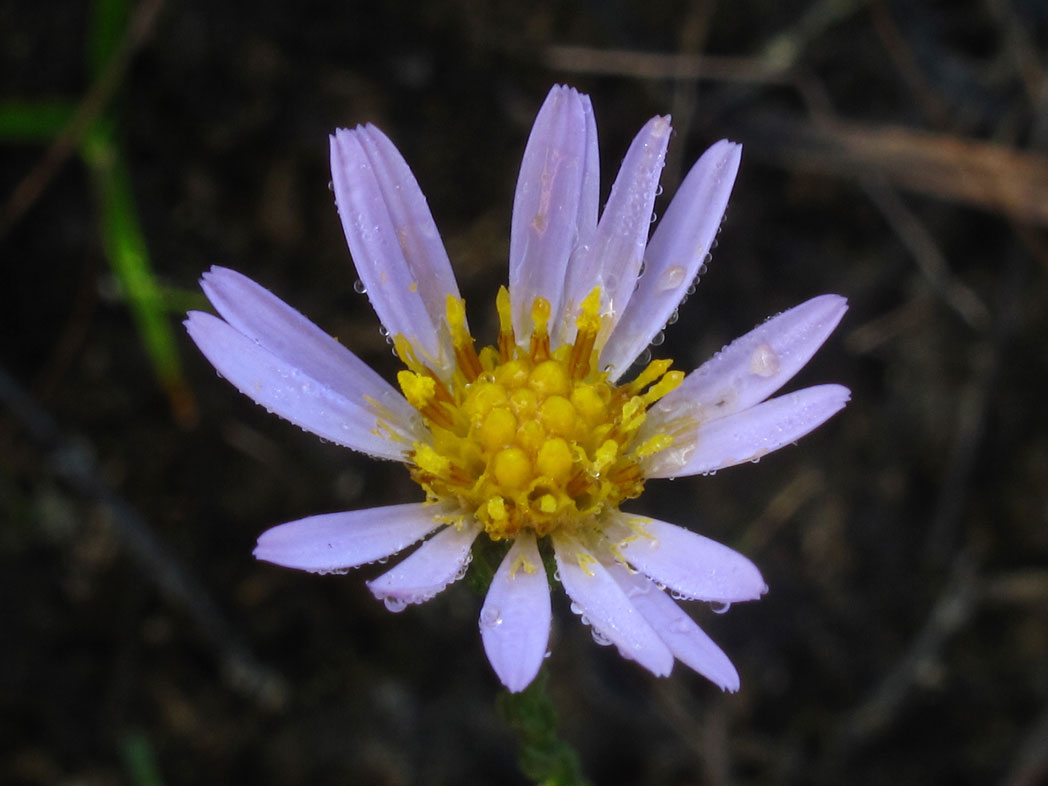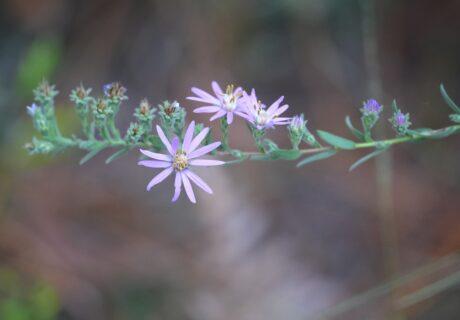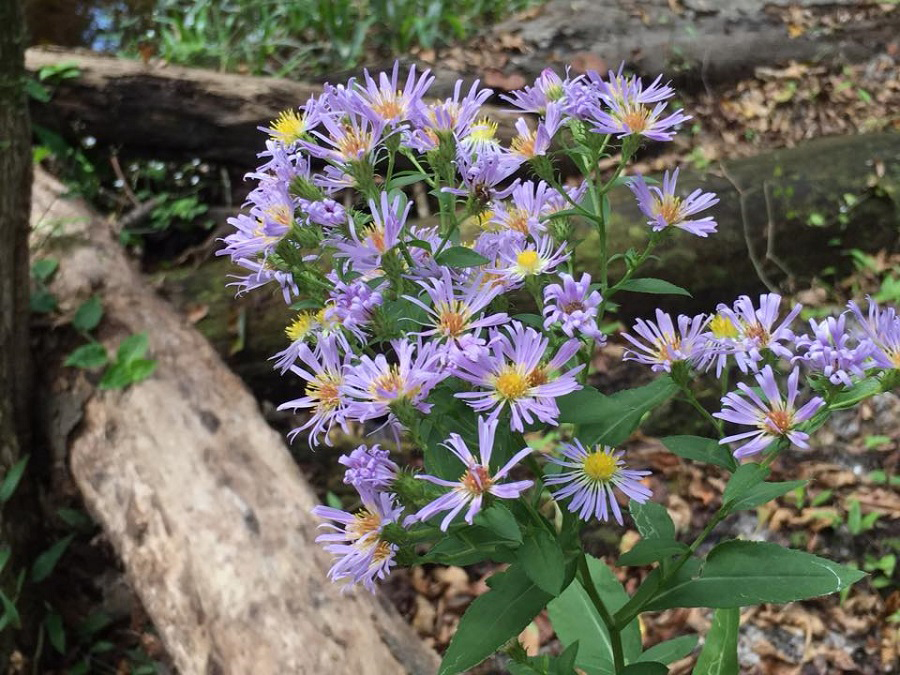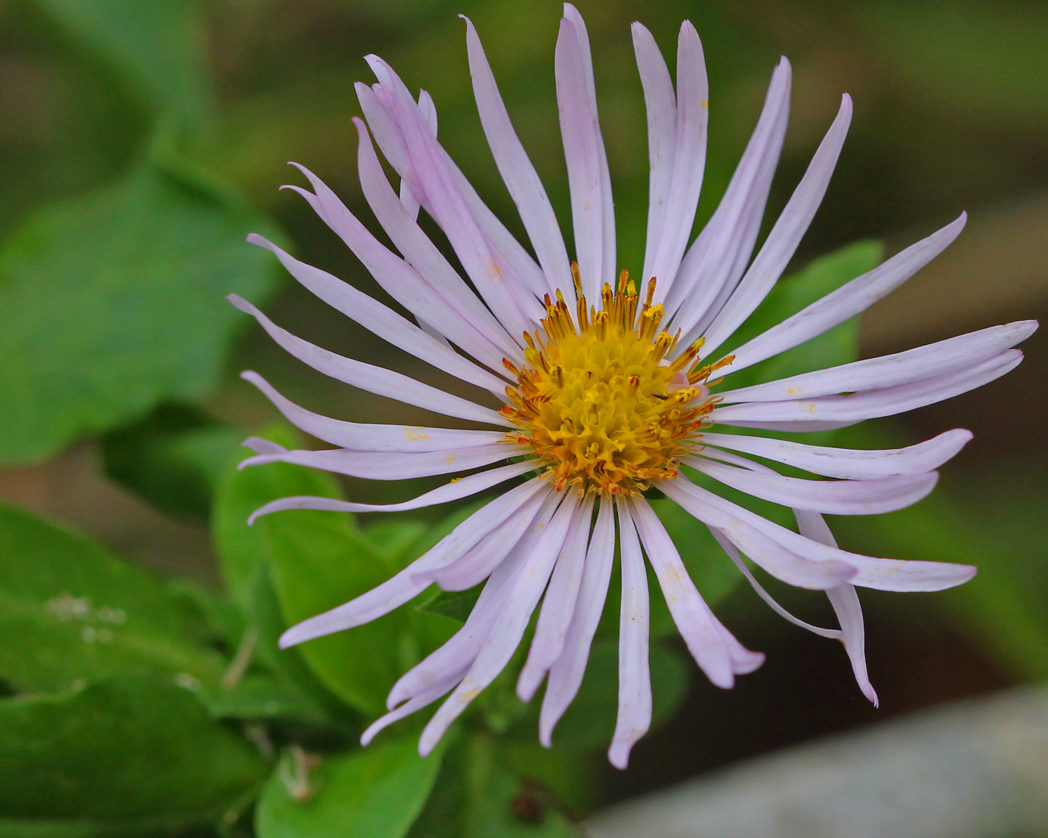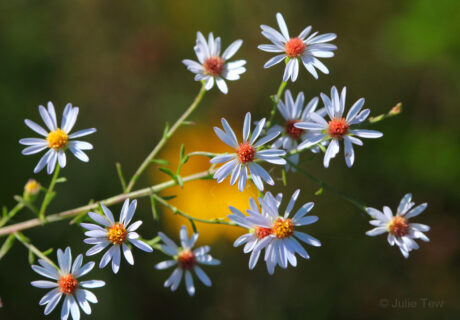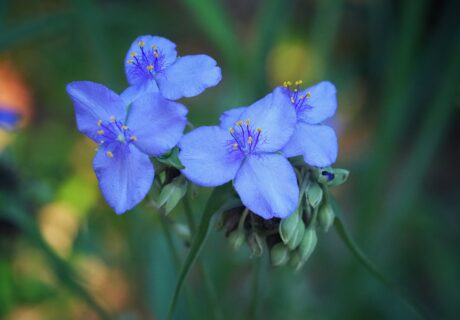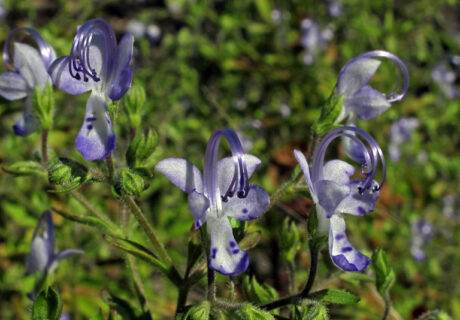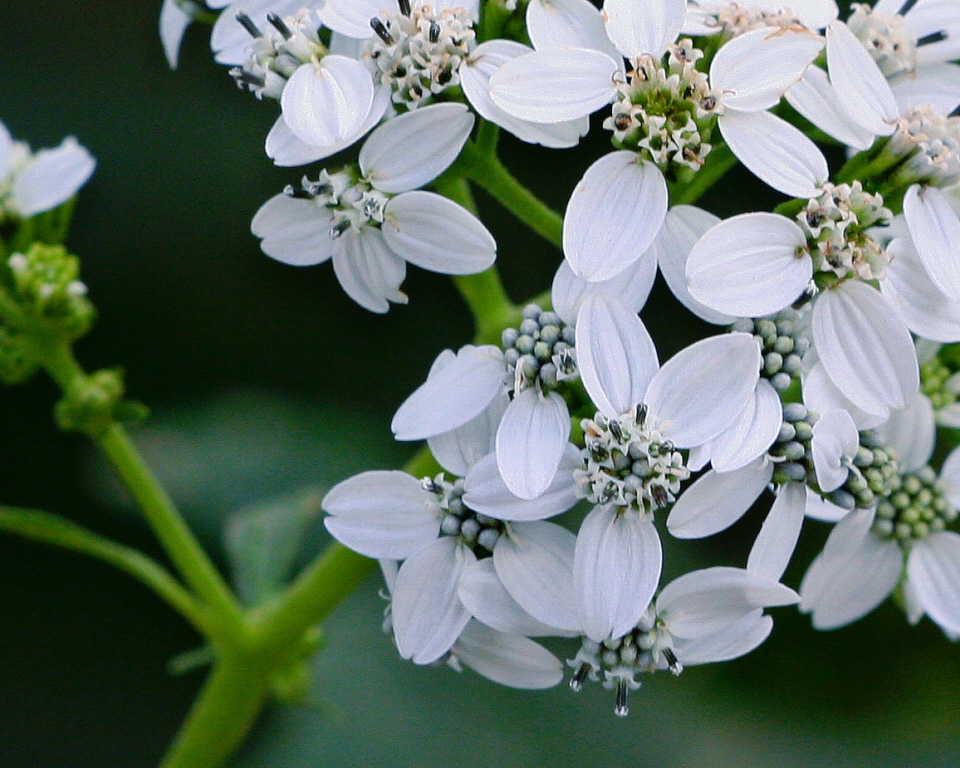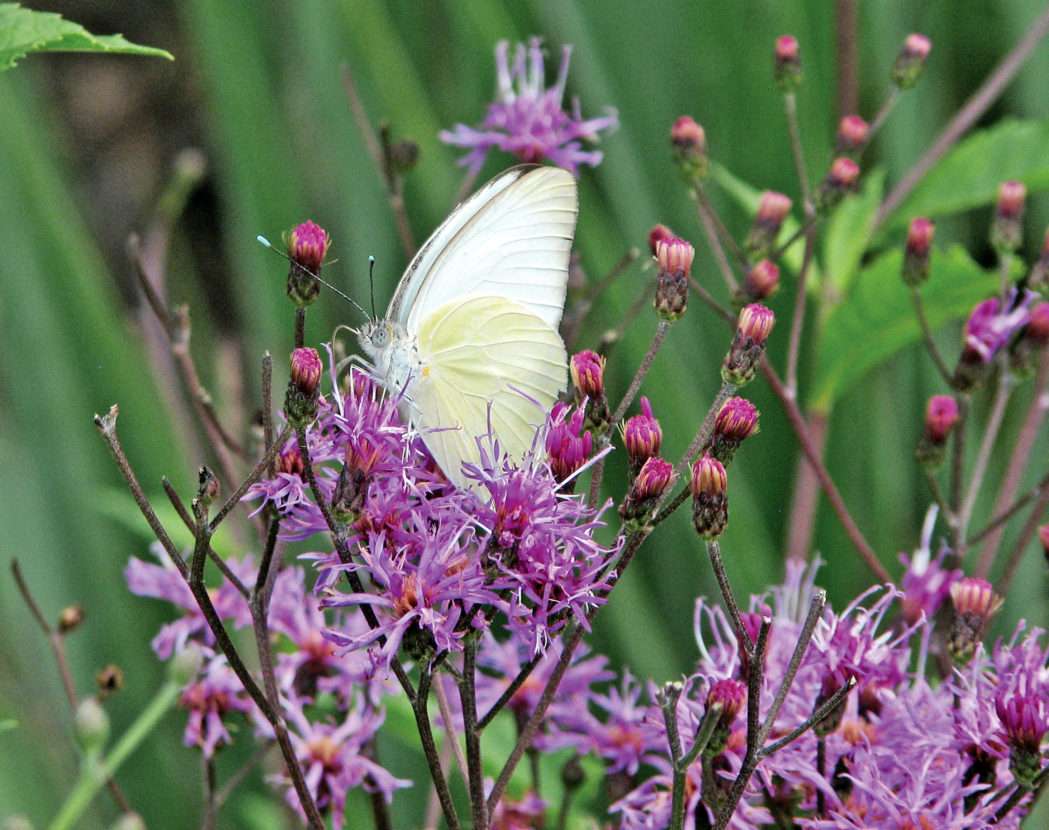Attracting Bees
and Other Beneficial Insects with Florida’s Native Wildflowers
Landscaping with Florida’s native wildflowers and plants provides refuge for birds, bees and butterflies while creating “habitat highways” through urban settings.
Florida’s bees
Florida is home to more than 300 species of bees. They vary in size from 2 to 25 mm, and range in color from brown, black or red to metallic green or blue.
In Florida, bees are active most of the year. Most nest in well-drained soil that is sparsely vegetated, but others nest in trees or other sources of wood, or plants with hollow stems. They may nest in spring and again in summer months.
Some bees are “specialists,” relying on a single wildflower species or family for food. Most, however, are “generalists” and gather pollen and nectar from a wide range of flowers.
Most native bees are solitary and are not usually aggressive as they are not defending a hive like the honey bee or other colonial bees. However, solitary bees may sting if surprised or threatened.
More than 80 percent of flowering plants and food crops are pollinated by insects. While gathering pollen and nectar for food, bees carry pollen from one flower to another, ensuring plant reproduction. This pollination syndrome (process) has evolved over millions of years.
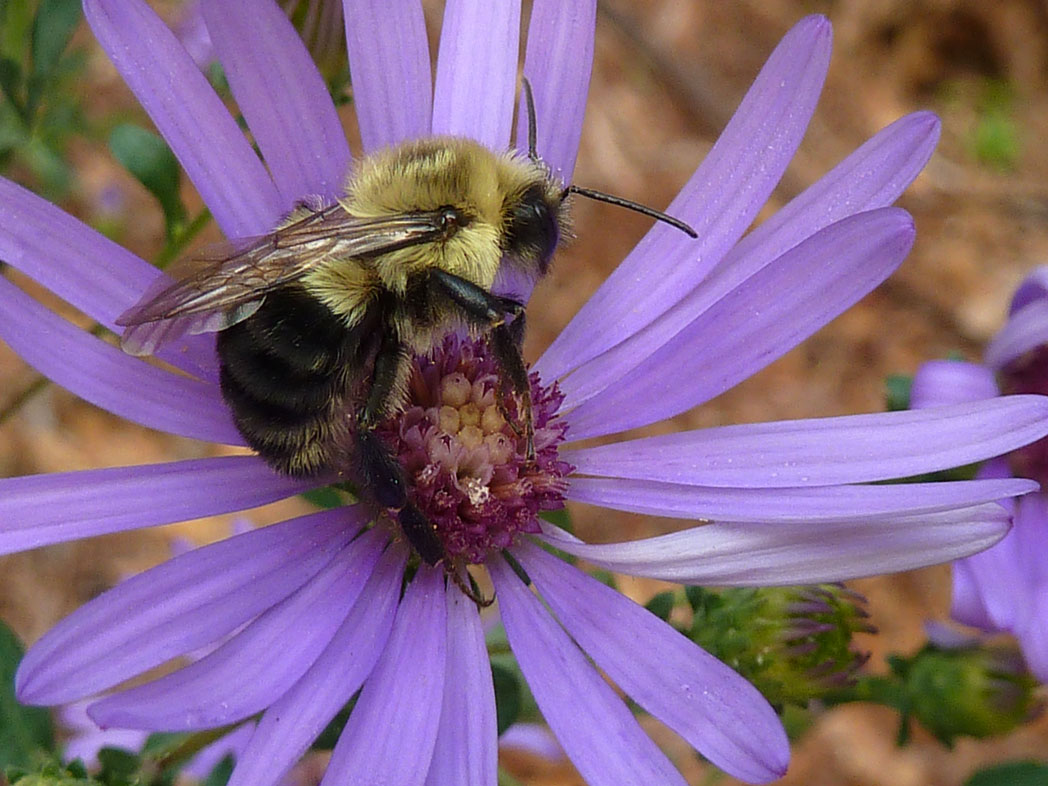
Planning your bee garden
Create a corridor between fragmented natural habitat and provide beneficial forage resources for foraging bees and insects.
- Choose sunny open areas with well-drained soil.
- Plant 15–25 species for maximum diversity.
- Plan to have at least three species in bloom each season.
- Include flowers of different sizes and shapes to attract a variety of bees.
- Plant 5–7 of each wildflower species in clusters to maximize visibility to insects.
- Include blue, purple, violet, white and yellow flowers, which bees prefer.
Bee characteristics
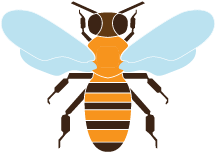
- Hairy bodies with constricted waists
- Two pairs of wings
- Long antennae and long tongues
- Pollen-carrying structures on hind legs or lower abdomen
Gardening practices
Avoid or minimize the use of pesticides. Use natural repellants like garlic or citrus oil, or pheromone traps to discourage pests. Be aware that broad application can be harmful to beneficial insects.
Create nesting sites. Leave open sandy patches for ground-nesting species. Let hollow-stemmed plants remain during the winter. Leave brush piles and use clumping grasses such as Lovegrass (Eragrostis species), Wiregrass (Aristida stricta) and Muhlygrass (Muhlenbergia capillaris) for nesting sites.
Provide homemade bee boxes.
Other insects
Wildflowers may attract other insects that provide natural pest control or pollination services, or serve as food for a variety of other organisms. Look for spiders, beetles, flies, wasps and true bugs in your garden and consider their duties in the ecosystem. They may provide pollination services or be a food source for lizards, birds or other insects.
Great wildflowers for bees and other beneficial insects
The following wildflowers work well in home landscapes and are attractive to bees and other beneficial insects.

